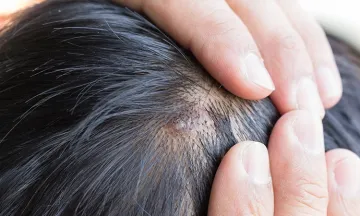Rheumatoid Arthritis: an invisible disease
“Ouch, my fingers hurt! And so does my wrist! And it’s hot and red too! Wonder why the pain? Especially when I haven't done anything out of my routine. Find myself experiencing a lot of pain and stiffness in my hands these days, that too without any provocation. Do I need to get it investigated? What could it be?"
Well to answer your question, you could be experiencing just a mild sprain, strain or vitamin deficiency causing the pains! Or it could be the beginning of Rheumatoid Arthritis (RA), an invisible disease that often goes unnoticed in the beginning.
What is Rheumatoid Arthritis?
Rheumatoid Arthritis is a chronic auto-immune disorder that primarily affects the joints. There is involvement of the small joints, usually the fingers and wrists.
It also affects the knee joints in some cases. The affections are usually bilateral, i.e. affecting same joints on both sides of the body. It is an inflammatory process triggered by abnormal immune response of the body. The immune system (defense mechanism) starts attacking the body's healthy tissue, predominantly the joints in case of Rheumatoid Arthritis, leading to inflammation of the joint initially and eventually leading to permanent damage of the joint. What triggers the auto immunity is still under consideration.
Also read https://www.drbatras.com/dont-lose-your-grip-on-life-because-of-rheumatoid-arthritis
Whom can it affect?
Rheumatoid Arthritis symptoms commonly begin between ages 30 and 60 year. Women are seen to be affected nearly three times more than men.
Women are prone to it at earlier ages, while in men it usually begins later in life.
Having a family history of Rheumatoid Arthritis symptoms puts you more at risk of developing the disease. Being obese is also one of the common causes of rheumatoid arthritis.
Can it be prevented?
As the cause of this auto-immune disorder still remains unexplained, there is not much one can do to prevent it. Maintaining a healthy diet and lifestyle helps minimize the risk of developing rheumatoid arthritis symptoms.
How does it present?
It can be classified into 4 stages depending on the extent of damage and the severity of rheumatoid arthritis symptoms.
Stage 1-Mild RA:
This is the first stage which often goes unnoticed. It begins with inflammation of the synovial tissue and the joint capsule. This leads to the pain, swelling and mild stiffness of the joints.Stage 2- Moderate RA:
This is when the disease begins to progress. The inflammation becomes severe enough to affect the cartilage (the connective tissue that connects the bone to other bones) causing damage to the connective tissue. As a result, rheumatoid arthritis symptoms of reduced mobility, stiffness and decreased joint range of motion begin.Stage 3- Severe RA:
Once the disease progresses to this stage it is considered to severe RA. At this stage, the disease not only has affected the synovium and the cartilage, but has started to damage the bone as well. Symptoms of rheumatoid arthritis at this stage include decreased mobility and even muscle strength accompanied by swelling, pain and tenderness in the joints. Physical deformities may also begin at this stage.Stage 4- End Stage RA:
This is the last stage of the disease where the inflammation ceases and the joint stops functioning altogether.
There is loss of mobility and severe stiffness of the joint. Pain and swelling also persist.
How is it diagnosed?
Rheumatoid arthritis diagnosis is done by physical examination of the joints, x-rays, blood tests that look for rheumatoid factor, erythrocyte sedimentation rate and C reactive proteins that give an indication of inflammation in the body. Anti CCP test also helps in rheumatoid arthritis diagnosis.
Can it be treated?
Although Rheumatoid Arthritis has no cure, treatment helps in alleviation of symptoms and control of the disease progression.
If left untreated, Rheumatoid Arthritis can lead to a variety of complications like Osteoporosis, Carpel Tunnel Syndrome (caused as a result of prolonged rheumatoid arthritis), Rheumatic Nodules (which are bumps of tissues formed on the pressure points like elbows), and Heart Disease (as it can increase risk of hardened arteries and inflammation of the pericardium-covering of the heart).
The treatment is done depending on the stage and the chronicity of the illness. Medication involve the use of NSAID's (Non Steroidal Anti-Inflammatory Drugs), DMARDs (Disease Modifying Anti-Rheumatic Drugs), Corticosteroids, Biologic agents or response modifiers depending on the requirement in the particular case of Rheumatoid Arthritis. But these medications do come with a price to pay in the form of severe side-effects like liver and lung damage, bone marrow suppression and weight gain.
Physiotherapy and occupational therapies help in severe Rheumatoid Arthritis where the deformity of joints has set in. Surgery is also done in end stage Rheumatoid arthritis where medications and rehabilitation have failed to yield results.
However, there are much safer and alternative therapies like homeopathy that help arrest the progression of the disease and give symptomatic relief thereby improving the general quality of life of the individual. Homeopathic medicines for rheumatoid arthritis go to the root cause of the disease and helps bring the deranged immunity back to its normal self. It also helps in effective symptomatic relief without any side-effects. It helps delay the progression of the disease thereby facilitating the individual to carry on day to day activities with ease.
A few lifestyle and dietary modifications along with continued homeopathy medicine for rheumatoid arthritis go a long way in management of this incurable disorder.




